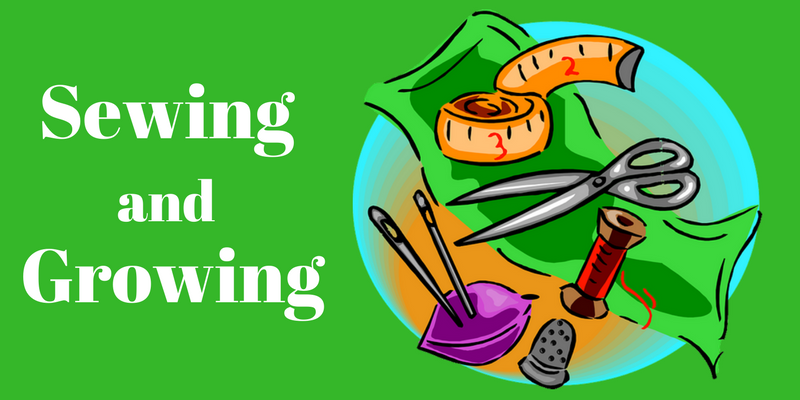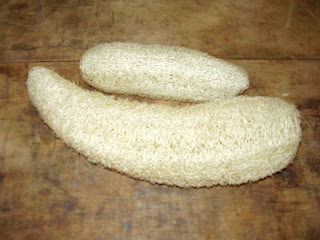Saturday, September 25, 2010
Luffa / Loofah Gourds: The Best Dishscrubbers You Can Grow
I probably won't be loom knitting anymore dishscrubbers, lol, because we have a huge harvest ready of Loofahs. Many folks don't know Luffas are vegetables. You can eat them if you harvest them when they are small (I want to try them for making bread), but if you let them grow on the vine, they will mature into fat vegetable sponges, which you can slice and use to scrub dishes (they work wonderfully on pots and everything else), or to give yourself (or a loved one) a vigorous scrubbing. This could remove all kinds of toxins and impurities that might otherwise stay in your skin! *You can just throw them in your washing machine to get them clean, too.*
Loofahs are wonderfully easy to grow, although they need a strong trellis or support. Mr. Green built that lovely 12' foot trellis this year using 4x4s, a shovel, wooden lattice, and nails and screws. But I have grown loofahs once before on a wooden swing support, or a fence could work fine, too.
Luffahs can be washed right in your washing machine!
The flowers are large and attractive.
When I grew these years ago, I followed instructions I found online that said to leave them on the vine until the sponges and vines turn to brown at the end of the summer. I did this, and it worked. But this year, I read further online, and decided to start harvesting these as they just start to lighten and discolor on the vine. This is much preferable to me because they are much easier to peel when still partially green. I just harvested them and then sat them on a table outside for only a day or two, turning occasionally. Then I whacked them a few times against a step. This loosened the skin, and even cracked it open in places....the sponges are then VERY easy to pull out of the skin, which just peels away. When I did this with already fully dried brown sponges, it would flake away into lots of tiny pieces that had to be scraped off and peeling them took a lot longer.
But this way they are still wet and sappy, so you have to use a strong jet from the hose to wash them out really well, shaking out seeds. Then I put mine back on the table outside to dry a few days, again, turning occasionally. As I said, you can then slice them into about 3" slices (or whatever you prefer) to use in the kitchen, or use a whole sponge for the shower or bath. You can also stuff one into a clean, empty pringle's can and then fill it with melt and pour soap to harden inside. Once the soap has cured, you simply peel away the pringle's container and slice the scrubby soap into bars. I would like to make some of these for Christmas gifts this year again, too.
I snapped a red zinnia, too, in the garden just now. I planted these Scarlet flame Zinnias from seed and now they are nearly 6 feet tall. There is a hummingbird or birds who are loving these; I see them often these days. Zinnias are my favorite flowers, I think, mostly because they grow so well for me. Besides the red, my favorites have been candy cane striped ones this year. I think I planted only 3 different zinnia seed packets and that has been enough for as many bouquets as I would want in my house, as well as enough to continually share bouquets with several neighbors, the teacher, my mom, etc.
I hope you all have a nice day!
Labels:
garden harvest,
gardening,
kitchen gifts,
natural skincare
Friday, September 24, 2010
Loom Knitting Socks
One of the reasons I am loving loom knitting is that I can do this on the couch next to Mr. Green while he watches TV, or in the rocking chair in the family room while my children are playing, as I sit in the car line waiting to pick Tall Sprout up from school, and even in bed before going to sleep. I love my sewing room, but my work in there is much more of a solitary pursuit.
I told you all about how easy it was for me to finally learn to knit using the Knifty Knitter looms. I knew I wanted to try to make socks, but I wanted a finer gauge (also known as sett) loom than the knifty knitters for this. I had heard good things about Decor Accents looms, and have had my eye on their Wonder Sock loom, which is adjustable, meaning the same loom can be used for making socks for anyone from a baby to an adult man.
However, I had to go to Hobby Lobby recently, searching for an odd sized sketch book that was on Tall Sprout's school supply list. I decided to just look and see whether they carried looms, and I found the Authentic Knitting Board Adjustable Sock Loom. The regular price of this loom was less than half of the one I have had my eye on, AND it happened to be 50% off on the day I was there. So I was able to pick up this sock loom at an incredible, affordable bargain.
I have had Isela Phelps' book, Loom Knitting Socks
Of course, a smaller sock will knit quicker, so I started using some stashed wool yarn using the toddler cuff down pattern. I love the cuff!
I wanted to show it to ya'll on his fat foot, but I chased him around with the camera for a long while and could not get him to sit still. This baby loves to play chase and is always in motion; I am not psychic but can totally see him with a pigskin under his arm as a running back. ( LOL....I have gotten him a football since I wrote that and he has learned to say "TutsDOWN!" and he does a touchdown dance when he says it, too! I didn't publish this post sooner because the pix aren't good, but I stopped by here today and thought I should put this up while I am here since it has been so long since I have made any posts).
Anyway, here is the clearest photo I snapped of the sock on his foot:
But I wanted to tell you about Isela Phelps' Loom Knitting Socks
This book is subtitled "a beginner's guide to knitting socks using a loom." And while it certainly is true that here is everything a beginner needs to know, there is also so much more. I think it could have more accurately been called the COMPLETE guide to knitting socks using a loom. There are 50 different sock patterns in this book, and while there are plenty to choose from for your first pair of socks, I don't think you will ever need any other book on the subject! There are simple socks as well as socks with cables, colorwork, lace, all kinds of designs, including butterflies and hearts and a beautiful trellis design, even complete instructions for making gorgeous beaded socks. I know this book could keep me and my sock loom busy for many years! And after working the diversity of patterns found here, and because the author has provided so much detailed information- including the magic formula to know to make socks to fit anyone, I know that I will be able to devise my own sock patterns. So, as I said, this is surely the only book you will ever need on this subject!
Labels:
easy things to make,
loom knitting
Subscribe to:
Posts (Atom)






